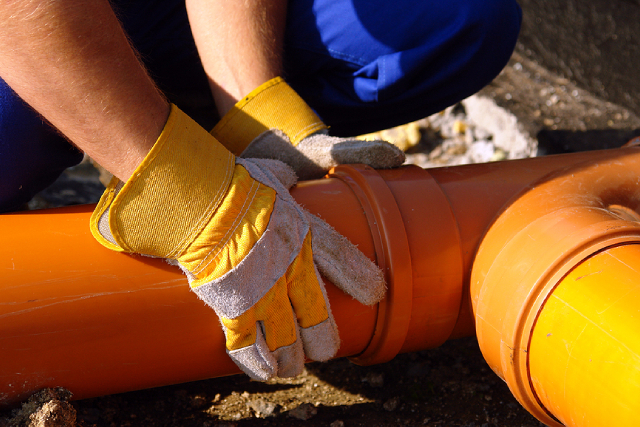
15 Jul PVC Pipe Fittings: A Guide To Pressure And Temperature Limits
There are limits to everything. Push anything too far, such as your phone battery, your car’s engine, or even your patience, and things begin to break down. The same applies to pipes. Specifically, PVC pipe fittings, which are used just about everywhere: homes, gardens, farms, factories, even high-tech hydroponic setups. Though strong, reliable, and cost-effective, these fittings aren’t indestructible.
Understanding how much pressure and heat a PVC fitting can take before it fails is essential for avoiding cracks, leaks, and potential system breakdowns. Whether you’re designing a plumbing system for a high-rise building or setting up a DIY irrigation system in your backyard, you need to know how to work within these physical limits for safety and efficiency.
Why pressure and temperature ratings matter
PVC pipe fittings are designed for strength, but their durability has boundaries. These limits are defined by pressure ratings (how much internal force they can handle) and temperature limits (how hot or cold the liquid or gas running through them can be). When you ignore these ratings, you risk system failure. That could mean a slow, invisible leak that causes long-term damage or a sudden burst that floods your space or disrupts an entire system.
The higher the temperature, the lower the pressure rating a pipe can safely handle. That’s because heat softens PVC, making it more prone to deformation. If you’re running warm water or exposed piping in a hot environment, this becomes particularly relevant.
Standard pressure ratings: what to expect
PVC pipe fittings are often rated by their “Schedule” (Schedule 40 or Schedule 80 being the most common). These schedules indicate wall thickness, which in turn affects how much pressure the fitting can withstand. For instance:
- Schedule 40 PVC fittings generally handle up to 120–150 PSI (pounds per square inch) at 23°C.
- Schedule 80 PVC fittings, which have thicker walls, can handle up to 210–250 PSI at the same temperature.
However, those numbers drop significantly with rising temperatures. For example, a Schedule 40 fitting rated for 150 PSI at 23°C might only handle 60 PSI at 60°C. That’s why manufacturers often provide a temperature de-rating chart.
Temperature thresholds for PVC
PVC’s maximum operating temperature is around 60°C (140°F). Beyond that, the material becomes soft, brittle, or warped. At temperatures above 80°C, even short exposure can cause structural failure or chemical leaching if the PVC is not specifically engineered for high heat.
In Singapore’s climate, with average outdoor temperatures around 30–34°C, heat-related issues may arise for exposed fittings under the sun or in enclosed areas with poor ventilation. That’s worth bearing in mind for garden irrigation or rooftop hydroponic systems.
Hydroponics, drainage, and industrial systems: Different needs
Different applications require different levels of resilience. For example:
- Hydroponics systems often operate at low pressure, but temperature regulation is crucial to prevent root damage and pipe failure.
- Household drainage systems use fittings that typically don’t experience high pressure, but they may be exposed to warm water from washing machines or showers.
- Industrial systems may run compressed air or liquids at high pressures and elevated temperatures, demanding the use of high-grade Schedule 80 fittings or alternatives like CPVC or metal.
Choosing the right fitting for each context is more than just picking the right size; it’s about knowing the conditions the system will face day-to-day.
Signs of pressure or temperature stress
You don’t need to wait for a pipe to burst before knowing something’s wrong. Watch for these early signs of stress in your PVC pipe fittings:
- Discolouration or whitening of the pipe (a sign of heat or UV degradation)
- Tiny surface cracks near joints or bends
- Warping or misshapen sections
- Slow drips or leaks under moderate pressure
These may indicate that your fittings are operating beyond their rated pressure or temperature range and should be replaced or reconfigured.
Working safely within limits
To ensure the longevity and safety of your system, always:
- Read the manufacturer’s specs carefully for both pressure and temperature ratings.
- Use fittings that match your system’s worst-case scenario, not just average use.
- Install fittings away from direct heat sources, such as boilers, exhausts, or prolonged sun exposure.
- Consider pressure relief valves or regulators in high-pressure setups.
- Secure joints properly using the recommended adhesives or mechanical connections to avoid weaknesses.
PVC remains the most popular pipe material today, thanks to its lightweight, corrosion resistance, and affordability. But popularity doesn’t exempt it from physical rules, respecting its limitations ensures your setup stays safe and efficient.
Where to find quality PVC pipe fitting
For long-term performance, the quality of your fittings matters just as much as how you use them. When looking for PVC pipe fitting in Singapore, opt for trusted suppliers who adhere to international testing standards. A reputable brand will also offer technical data sheets and customer support to help you choose fittings based on your project’s needs.
Whether you’re planning a commercial plumbing installation or a DIY hydroponic garden, working with reliable fittings can save time, money, and plenty of headaches down the road.
Conclusion
Pressure and temperature ratings aren’t just numbers but essential guides to help you build systems that last. Taking the time to understand the stress limits of your PVC pipe fittings allows you to avoid costly failures and enjoy peace of mind in your setup.
If you’re looking for durable, tested, and reliable pipe fittings, look no further than Vicplas. Vicplas offers a comprehensive range of over 400 designs of pipe and pipe fittings to meet your every need, from simple home improvements to large-scale industrial projects.
